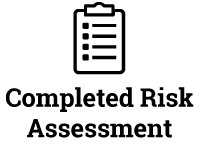Factors That Shape Places

Geography
Syllabus Outcomes GE3-1 | GE3-2 | GE3-3 | GE3-4
$24.00
All parents and teachers can attend for no additional cost.
+GST. As this program is an educational service, all GST charged can be reimbursed in its entirety by the Government. This price excludes transport. (Minimum charge of x35 students).
About
Join us on an engaging excursion to a secret spot which will have your students walking along untouched creeks, bushwalking through pristine vegetation and hugging our state’s tallest trees. In the second-oldest National Park in the world, students will hear how the government manages this environment and how people have influenced this pristine spot, and learn how they can contribute to sustainability. Students are immersed within a range of natural settings, exploring and learning firsthand how people and environments influence one another, and explaining the interactions and connections between people, places and environments.
Syllabus Outcomes Addressed
GE3-1 describes the diverse features and characteristics of places and environments
GE3-2 explains interactions and connections between people, places and environments
GE3-3 compares and contrasts influences on the management of places and environments
GE3-4 acquires, processes and communicates geographical information using geographical tools for inquiry

Arrive/Depart
Full Day Excursion (4 Hours) 10am – 2pm
Time allocation for excursions can be tailored and adjusted to suit your individual school timetable and scheduling.
Transport
Would you like our help with transport? We can suggest a range of transport providers to help source and book a transport quote for you! We would highly recommend that you book directly through the transport providers.
Please be aware that we provide transport quotes as a service to help make your booking process easier for you. Transport companies are in no way affiliated with Ranger Jamie Tours.
What's Included
 |
Syllabus Content Focus
Key inquiry questions answered
- How do people and environments influence one another?
- How do people influence places and the management of spaces within them?
Factors that change environments
Students:
- investigate the ways people change the natural environment in Australia and another country, for example: (ACHGK026, ACHGK027)
- examination of how people, including Aboriginal and Torres Strait Islander Peoples, have influenced each country’s environmental characteristics eg land clearing
Environments shape places
Students:
- investigate how the natural environment influences people and places, for example: (ACHGK028)
- discussion of how climate influences the distribution of where people live
- comparison of how landforms influence where and how people live in Australia and another country
Humans shape places
Students:
- investigate how people influence places, for example:(ACHGK029)
- description of who organises and manages places eg local and state governments
- identification of ways people influence places and contribute to sustainability eg roads and services, building development applications, local sustainability initiatives
- examination of a local planning issue; the different views about it and a possible action in response to it
Day Outline
| Arrival / Morning Tea / Toilet Break (approx. 20 minutes) |
|
| Introductory Presentation | The day kicks off with a meet and greet with our enthusiastic Rangers followed by an interactive and engaging presentation. (approx. 25 minutes) |
| Grouping: Students are divided into their groups of approximately x 30-35 students and are allocated a Ranger guide for each activity. | |
| Activity 1 | Students participate in each activity for approximately 30 minutes. |
| Activity 2 | Students participate in each activity for approximately 30 minutes. |
| Lunch / Toilet Break (approx. 25 minutes) |
|
| Activity 3 | Students participate in each activity for approximately 30 minutes. |
| Activity 4 | Students participate in each activity for approximately 30 minutes. |
| Wrap Up / Conclusion / Toilet Break (approx. 20 minutes) |
|
Activities
Activities are location specific and change depending on the location you choose. Please see drop down to see what activities are offered at each location. Students will participate in up to 4 of the below activity options.
Introduction: The day kicks off with an exciting and engaging presentation with taxidermy animals, focusing on the importance of protecting places, the need to preserve our natural environment, and how the unique features of different places can support a variety of flora and fauna.
Activity 1: Waterworks – Students get their hands all slimy with child friendly craft paint, shampoo, vegetable oil, talcum powder, sunscreen and water. Students will look at ways to protect our waterways sustainably and the importance of our rivers, creeks, beaches and lakes.
Activity 2: Building Bird Houses – Students identify the importance of trees and tree hollows within our national parks as they make bird houses in small groups. At the end of this activity students will place these around the area to attract local wildlife. They’ll be excited to come back after a few weeks and discover what species are living in their specially made habitats. A great way to give back to our wildlife community!.
Activity 3: Bug Catching – Students will have faces camouflaged in child-friendly face paint. Students will be given small clear jars with lid to catch anything creepy crawly they find – spiders not allowed. This activity shows students the biological diversity of environments and what can live in habitats. This activity also focuses on how animals have adapted to live within our cities and built-up urban areas and how humans need to create green spaces for our animals. Students will be able to identify what they have caught as they cross reference their bug to the identification sheets provided.
Activity 4: Bush Habitat Making – Students work together in small teams to create an animal home for possums, wombats, wallabies and the other animals which live in this environment. Students will have their creative side sparked in this activity. Each group will be given a large array of sticks, bark, leaves and branches to make specific animal homes. This activity focuses on the destructive human influence on environments and why we must protect habitats for different species. Students work together in groups and their creative side will be sparked as they create an elaborate animal dwelling/ habitat.
Activity 5: Beach Habitat Making – Students work together in small teams to create an animal home for penguins, crabs, sea birds and other animals which live in this environment. Students will have their creative side sparked in this activity. Each group will be given cardboard boxes and tasked with collecting sticks, sand, stones and shells to make specific animal homes. This activity focuses on the destructive human influence on environments and why we must protect beach habitats for different species. Students work together in groups and their creative side will be sparked as they create an elaborate animal dwelling/ habitat.
Activity 6: Dip Net Fishing – Students will use dip-nets on long-handled poles to catch water-dwelling critters and examine the different species which live in the local environment. They’ll take samples and catch bugs from different areas, and use scientific tools and equipment to determine whether an environment is healthy or unhealthy
Activity 7: Bush Walk – Students will be taken on a bushwalk through the incredible surrounding bushland, exploring the unique features of this scenic area. They’ll get to explore our native bushland and be able to get up close and personal with the flora and fauna that can be found at this level, learning how movements can be observed in nature, for example with wind.
Activity 8: Hand-Reel Fishing – Students will use hand-reels with bait to catch fish and other water-dwelling critters and examine the different species which live in the local environment. They’ll take samples and catch critters from different areas and use scientific tools and equipment to determine whether an environment is healthy or unhealthy.
Activity 9: Crab Catching – Students will be given small clear jars with lids to catch and release crabs in a beautiful wetland environment. Students will be amazed at how many crabs live in this beautiful area. How many will your students find?
$24.00
All parents and teachers can attend for no additional cost.
+GST. As this program is an educational service, all GST charged can be reimbursed in its entirety by the Government. This price excludes transport. (Minimum charge of x35 students).

Choose Your Date
Step 1 of 3
Please note this is a tentative booking. After your booking request is submitted, we will be in touch via email to confirm the requested date and arrange the final details for the booking.

